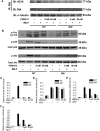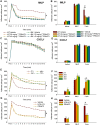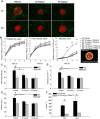PRN473, an inhibitor of Bruton's tyrosine kinase, inhibits neutrophil recruitment via inhibition of macrophage antigen-1 signalling
- PMID: 29130484
- PMCID: PMC5773957
- DOI: 10.1111/bph.14090
PRN473, an inhibitor of Bruton's tyrosine kinase, inhibits neutrophil recruitment via inhibition of macrophage antigen-1 signalling
Abstract
Background and purpose: Following inflammatory stimuli, neutrophils are recruited to sites of inflammation and exert effector functions that often have deleterious effects on tissue integrity, which can lead to organ failure. Bruton's tyrosine kinase (Btk) is expressed in neutrophils and constitutes a promising pharmacological target for neutrophil-mediated tissue damage. Here, we evaluate a selective reversible inhibitor of Btk, PRN473, for its ability to dampen neutrophil influx via inhibition of adhesion receptor signalling pathways.
Experimental approach: In vitro assays were used to assess fMLP receptor 1 (Fpr-1)-mediated binding of ligands to the adhesion receptors macrophage antigen-1 (Mac-1) and lymphocyte function antigen-1. Intravital microscopy of the murine cremaster was used to evaluate post-adhesion strengthening and endoluminal crawling. Finally, neutrophil influx was visualized in a clinically relevant model of sterile liver injury in vivo. Btk knockout animals were used as points of reference for Btk functions.
Key results: Pharmacological inhibition of Btk by PRN473 reduced fMLP-induced phosphorylation of Btk and Mac-1 activation. Biochemical experiments demonstrated the specificity of the inhibitor. PRN473 (20 mg·kg-1 ) significantly reduced intravascular crawling and neutrophil recruitment into inflamed tissue in a model of sterile liver injury, down to levels seen in Btk-deficient animals. A higher dose did not provide additional reduction of intravascular crawling and neutrophil recruitment.
Conclusions and implications: PRN473, a highly selective inhibitor of Btk, potently attenuates sterile liver injury by inhibiting the activation of the β2 -integrin Mac-1 and subsequently neutrophil recruitment into inflamed tissue.
© 2017 The British Pharmacological Society.
Figures





References
-
- Bermejo DA, Jackson SW, Gorosito‐Serran M, Acosta‐Rodriguez EV, Amezcua‐Vesely MC, Sather BD et al (2013). Trypanosoma cruzi trans‐sialidase initiates a program independent of the transcription factors RORγt and Ahr that leads to IL‐17 production by activated B cells. Nat Immunol 14: 514–522. - PMC - PubMed
-
- Bisconte A, Hill RJ, Bradshaw JM, Verner E, Karr D, Finkle D, et al (2015). Efficacy in collagen induced arthritis models with a selective, reversible covalent Bruton's tyrosine kinase (BTK) inhibitor PRN473 is driven by durable target occupancy rather than extended plasma exposure. In: American Association of Immunologist Annual Meeting, Vol. May 8–12, 2015. New Orleans, LA.
Publication types
MeSH terms
Substances
Grants and funding
LinkOut - more resources
Full Text Sources
Other Literature Sources
Research Materials

